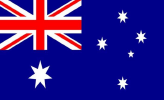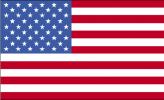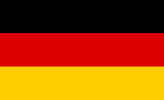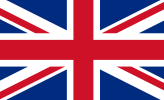Would you like to change your language?


A History of Soda


The first of the fizzers
The history of soda is like the drink itself: sparkling, sweet and full of hiccups at the start.
The first soda was made as early as the 18th century, but it probably didn’t taste very good. Earlier creators tried to mimic natural mineral water. That’s because mineral water was thought to have curative powers – an ancient idea that the Romans had planted a couple of thousand years earlier. So, how did the first soda makers create that mineral tang? By stirring in some chalk and acid. How, er, different.
In the late 18th century, a few more inventors were tinkering around with recipes trying to hit the sweet spot (hah) and jumped on the soda train.
Proper carbonation techniques were developed in the 1760s, while Jacob Schweppe – the namesake of Schweppes – began selling seltzer in Geneva in 1789. In 1798, “soda water” became the mainstream term used for carbonated water. By 1835, the first soda water was being bottled in the US.
But it didn’t stop there. Inventors who were clued in to the tastes and desires of their newfound soda audience started experimenting with flavoring.
Sweetening the deal
Adding sweetners and flavorings (such as wine) to seltzer gradually became popular in the late 18th and early 19th centuries. Flavored syrups made from fruit were being advertised by 1865. Thirsty customers with taste for the tropical could choose from varieties like pineapple, black cherry, gooseberry, pear and even tutti frutti.
Things got real when in 1886, J.S. Pemberton combined African kola nut and South American cocaine to concoct a drink we are all familiar with: Coca-Cola. Thankfully the recipe has since been tweaked. Today there are many different reimaginations of cola, with various craft ingredients the main focus, such as the myrtle-leaved orange tree used in chinotto.
A few more famous drinks continued to be invented throughout the mid- to late 1800s, from Dr Pepper to Pepsi, giving rise to the term “pop” being coined in 1861.
Soda was popularized at milk bars and among ‘soda jerks’ who – for those who are too young to remember – were the charismatic youths who operated soda fountains in drug stores, popular between the 1920s and 1950s.
Soda pop to craft soda
In recent times there’s been a demand for more health-conscious soda, or at least non-mass-produced products with carefully considered ingredients dominating the market. A trend, which became a market all of its own, gave way to craft soda.
So just what is craft soda and how is it made?
They’re known by many names – artisanal, specialty, small-batch – but are all about the same thing: using quality natural ingredients, unique or ‘gourmet’ flavors, and sometimes limited runs or locally sourced ingredients.
The rise of craft soda in America has recently thrust its biggest brands into the spotlight. Froth over this: craft soda reached $541 million wholesale in 2016, and grew 5% in volume that same year despite the rest of the carbonated beverage industry being down at the time. And it’s no wonder – millennials love the stuff. A more health conscious generation than our previous baby boomers, they want to be seen as unique individuals with their beverage choices and are looking for alternate flavors to expand their palate.
That’s why at Bundaberg we have an entire crafting process that we take great pride in. for the last 50 years we’ve been brewing to a slow but steady time-honored recipe, with most of our drinks (including our famous ginger beer) requiring up to seven days to craft brew every batch.
There’s nothing craft soda can’t do. Its sugar content is often much less. Ingredients are likely to be locally sourced which gives you the feel-good factor of supporting producers in your neck of the woods. Plus, craft sodas serve up unique and interesting flavors that are perfect for mixing into alcoholic drinks.
So next time you’re looking for a thirst quencher or a mixer to go with a new cocktail recipe you’re trying, reach for a Bundaberg Brewed Drink.
Cheers to that!





